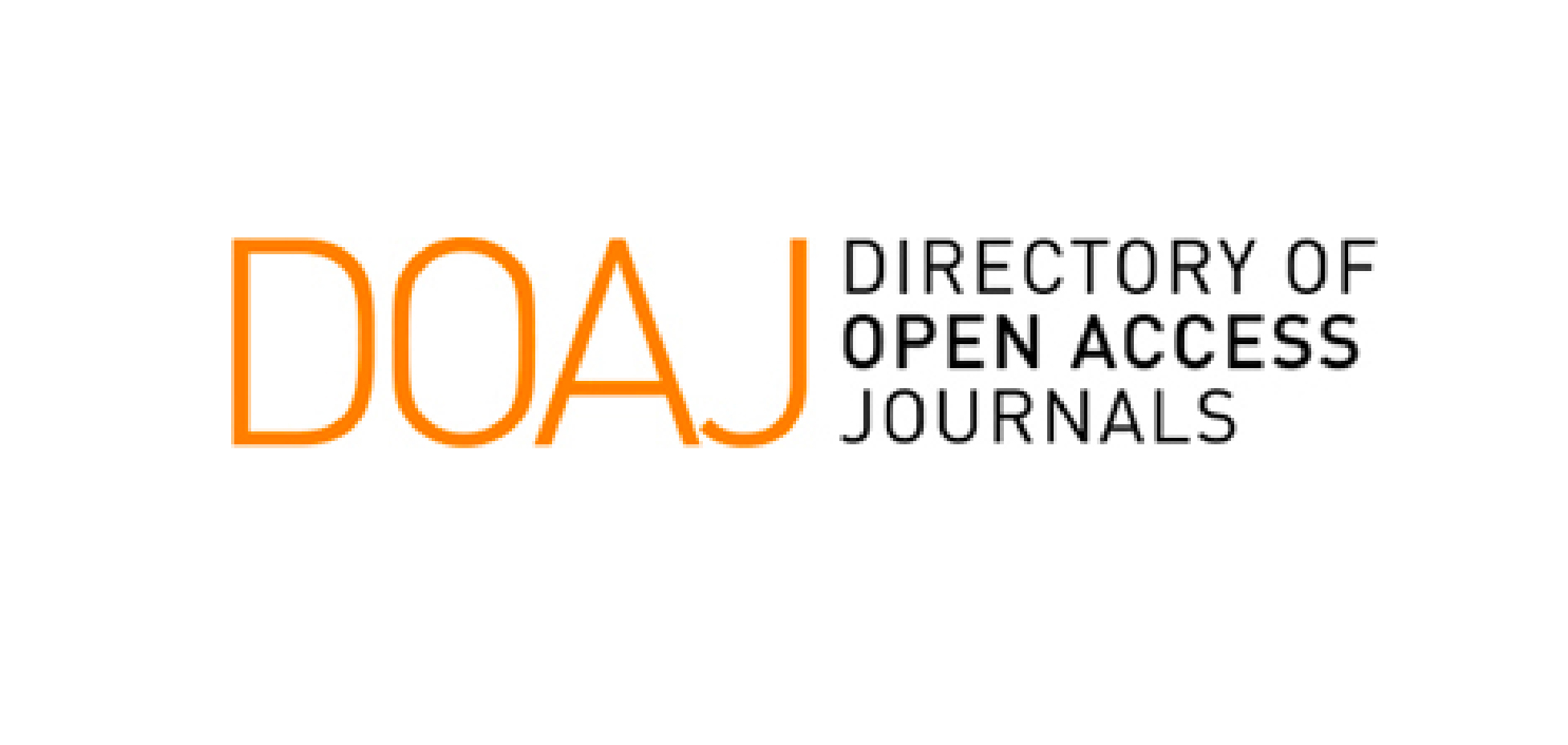PERTUMBUHAN TANAMAN SENGON (PARASERIANTHES FALCATARIA L.) TERINFEKSI MIKORIZA PADA LAHAN TERCEMAR Pb.
Abstract
Paraserianthes falcataria plant is well known to be capable to make an excellent association and symbiosis with mycorrhizae. Mycorrhizae can improve the plant's ability to survive in heavy metal contaminated land, one of which is Pb (lead). Pb is the main heavy metal pollutants in all environments. This aims of this research were to determine the accumulation of Pb on sengon plant roots and its growth in Pb contaminated media. This research uses a completely randomized design. Pb(NO3)2 were given at a dose of 833 mg/kg and the concentration of mycorrhizal inoculation of Glomus sp. used were 25, 50 and 75 grams of mycorrhizae. The measured parameters were plant height, root length, plant dry weight, accumulation of Pb in roots, chlorophyll and protein profile test. The results showed that 75 grams of mycorrhizal Glomus sp. were the highest on several parameters including plant height, dry weight, root length. The chlorophyll content were grown on media containing Pb with each value of 77.5 cm; 17.86 grams; 31.5 cm; 8.99 g/ml. A dose of 75 grams of Glomus sp. also increased the absorption and accumulation of Pb in the roots with 3.60 ppm. while the protein electrophoresis show the specific band in P. falcataria that exposed to Pb with molecular weight 53.67 kDa.
Keywords
Full Text:
PDFReferences
Aldeman , J.M., and J.B. Morton. 2006. Infectivity of Vesicular Arbuscular Mychorrizal Fungi Influence Host Soil Diluent Combination on MPN Estimates and Percentage Colonization. Soil Biolchen Journal. Vol. 8 (1):77- 83.
Balba, A.M., Shibiny and Khatib. 1991. Effect of Lead Increments on the Yield and Lead Content of Tomato Plants, Water. Air Soil Pollut. Vol. 57 (93).
Chen , B., Zhu, Duan, Xiao X., and Smith S. 2007. Effects of the Arbuscular Mycorrhizal Fungus Glomus mosseae on Growth and Metal Uptake by Four Plant Species in Copper Mine Tailings. Environ Pollut. Vol. 147:374-380
Cunningham, S.D., and W.R. Berti. 1993. Remediation of Contaminated Soils with Green Plants: An Overview, In Vitro Cell. Dev. Biol. 29P:207-212.
Delvian. 2005. Pengaruh Cendawan Mikoriza Arbuskula Dan Naungan Terhadap Pertumbuhan Bibit Kayu Manis (Cinnamomum burmanii BL.). Jurnal Ilmiah Ilmu-Ilmu Pertanian Agrisol. Vol. 4 No.1.
Desi, L., R. Linda and Mukarlina. 2013. Pertumbuhan Jagung (Zea mays L.) dengan Pemberian Glomus aggregatum dan Biofertilizer pada Tanah Bekas Penambangan Emas. Jurnal Protobiont. Vol. 2 (3):176 – 180.
Etim, E.E. 2012. Phytoremediation and its Mechanisms: A Review. International Journal of Environmental and Bioenergy. Vol 2 (3):120-136
Galii, U., Meier M., and Brunold C. 1993. Effect of Cadmium on Nonmycorrhizal and Mycorrhizal Fungus (Laccasaria laccata Scop.Ex.Fr): Sulphate Reduction, Thiols and Distribution of the Heavy Metal. New Phytol. Vol. 125:837-843.
Hardiatmi, S.J.M. 2008. Pemanfaatan Jasad Renik Mikoriza untuk Memacu Pertumbuhan Tanaman Hutan. Jurnal Inovasi Pertanian. Vol.7 (1):1-10.
Ivanov, V.B., E.I. Bystrova, N.V. Obroucheva, O.V. Antipova, M. Sobotik and H. Bergmann. 1988. Growth Response of Barley Roots as an Indicator of Pb Toxic Effects”. J. Appl. Bot. Vol. 72 : 140-143.
Joner , E.J., Briones and Leyval C. 2000. Metal-Binding Capacity of Arbuscular-Mycorrhizal Mycelium. Pl Soil. Vol. 226 (2):227-234.
Nouri , J., N. Khorasani, B. Lorestani, M. Karami, A.H. Hassani, N. Yousefi. 2009. Accumulation of Heavy Metals in Soil and Uptake by Plant Species with Phytoremediation Potential. Environ Earth Sci. Vol. 59:315–323.
Nugroho, T.A. dan Z. Salamah. 2015. Pengaruh Lama Perendaman dan Konsentrasi Biji Sengon (Paraserianthes falcataria L.). JUPEMASI-PBIO, Vol. 9 No. 3.
Nurhayati. 2012. Inffectiviness and Effectiviness of Mycorrhizae in the Some Host Plants and Source of Inoculum. Jurnal Agrista. Vol. 16 No. 2.
Obroucheva, N.V., V.B. Bystrova, O.V. Ivanov, M.S. Antipova and I.V. Seregin.1998. Root Growth Responses to Lead in Young Maize Seedlings. Plant Soil. Vol. 200:55-61.
Paivoke. 2002. Soil Lead Alters Phytase Activity and Mineral Nutrient Balance of Pisum sativum. Environ. Exp. Bot. 48:61-73.
Peni, D.K., Solichatun dan E. Anggarawulan. 2004. Pertumbuhan, Kadar Klorofil-Karotenoid, Saponin, Aktivitas Nitrat reduktase Anting-anting (Acalypha indica L.) pada Konsentrasi Asam Giberelat (GA3) yang Berbeda. Biofarmasi 2. Vol 1: 1-8.
Reichman , S.M. 2002. The Responses of Plants to Metal Toxicity: A review focusing on Copper, Manganese and Zinc. Australian Minerals & Energy Environment Foundation:Melbourne.
Rossiana, N. dan Titin S. 2003. Penurunan Kandungan Logam Berat dan Pertumbuhan Tanaman Senogon (Paraserianthes falcataria (L) Nielsen) Bermikoriza dalam Medium Limbah Lumpur Minyak Hasil Ekstraksi. UNPAD:Bandung.
Saputro. T.B. 2012. Multiplikasi Tunas Pada Mikoropropagasi Tanaman Transgenik Anggrek (Phalaenopsis amabilis L.) Blume Pembawa 35S::KNAT1 Pada Media Tanpa Fitohormon. Thesis. UGM:Yogyakarta.
Sastrahidayat, I.R. 2011. Rekaya Pupuk Hayati Mikoriza dalam Meningkatkan Produksi Pertanian. Universitas Brawijaya Press : Malang.
Sergio, T., Pichardo, Yi Su and F. Han. 2012. The Potential Effects of Arbuscular Mycorrhizae (AM) on the Uptake of Heavy Metals by Plants from Contaminated Soils. J. Bioremediation & Biodegradation. Vol. 3 (10).
Sharma, P., and S.R. Dubey. 2005. Lead Toxicity in Plants. Plant Physiol. Vol. 17 (1):35-52.
Suharno and R.P. Sancayaningsih. 2013. Fungi Mikoriza Arbuskula: Potensi teknologi mikorizoremediasi logam berat dalam rehabilitasi lahan tambang. Bioteknologi. Vol. 10 (1):31-42
Suharti. 2008. Aplikasi Inokulum EM-4 dan Pengaruhnya Terhadap Pertumbuhan Bibit Sengon (Paraserianthes falcataria (L.). Jurnal Penelitian Hutan dan Konservasi Alam. Vol. V no. 1.
Taiz, L. dan E. Zieger. 1998. Plant Physiology. Sinaver Associates. Inc. Publisher: Massachussets.
Tariq, M., K.R. Islam And S. Muhammad. 2007. Toxic Effects of Heavy Metals on Early Growth and Tolerance of Cereal Crops”. Pakistan Journal of Botany. Vol.39 (2): 451-462.
Tong, Y.P., Kneer R., and Zhu Y.G. 2004. Vacuolar Compartementation : a Second - Generation Approach to Engineering Plants for Phytoremediation. Trends Plants Science. Vol. 9:7-9.
Widyati. 2008. Peranan Mikroba Tanah pada Kegiatan Rehabilitasi Lahan Bekas Tambang (Roles of Soil Microbes in Ex-Mining Land Rehabilitation). Info Hutan. Vol. 5 No. 2:151-160.
Yang, X., Feng Y., He Z., and Stoffella P.J. 2005. Molecular Mechanisms of Heavy Metal Hyperaccumulation and Phytoremediation. Journal of Trace Elements in Medicine and Biology. Vol. 18:339-53
DOI: http://dx.doi.org/10.12962/j24433527.v9i2.1684
Refbacks
- There are currently no refbacks.
This work is licensed under a Creative Commons Attribution 4.0 International License.







